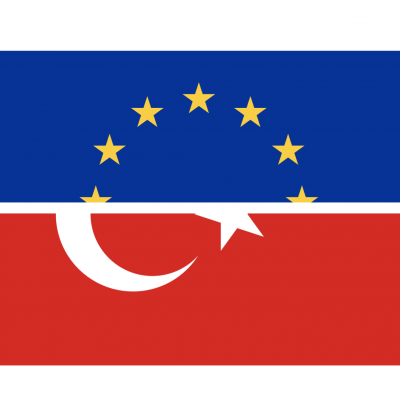Details
Article
Like so many Humanity in Action Fellows, I have been one of the world’s most privileged migrants, able to study abroad and develop a global career. In the mid-2000s, when the Humanity in Action network brought me from the United States first to Germany and then to the Migration Policy Group in Brussels, my passion—migration—was a marginal topic in research and public debates.
Migration was a niche specialization in a few distinct fields—economics, demography, human rights law and race and identity studies—and experts in these fields rarely influenced or even spoke with each other. Most work on migration was limited to a few dozen countries, mostly in the ‘developed’ world. Traditional destination countries like the United States thought that they had overcome their past racial divisions and established a political consensus on migration and diversity. A few supranational institutions and networks like Humanity in Action started to raise these issues and develop a global agenda, with a new generation of young leaders.
Over these last fifteen years, migration came of age as its own field of knowledge and as one of the structural political issues of our time. Migration studies took off in the 2000s and tripled in terms of the number of researchers, articles and organizations working on these topics. There are now 45 academic journals focused solely on migration and migration-related diversity. Migration is now a distinct, international and truly inter-disciplinary field of study and practice.
Migration is now a distinct, international and truly inter-disciplinary field of study and practice.
People working on migration now regularly refer to each other across disciplines and incorporate these different theories and methodologies into their work. So many specialized courses, programs, research institutes and organizations are producing a constant churn of trained students, PhDs as well as specialized staff, bureaucrats and volunteers.
The migration sector is also becoming global. Organizations have emerged and expanded across most countries around the world. NGOs and cities leading on migration are well-networked, at least in the developed world, and strong research institutes have emerged, particularly in Europe and Canada. Also my work has helped to develop civil society and comparative knowledge on immigrant integration from all corners of Europe to Central and East Asia. Increasingly, our understanding of migration better reflects the diversity of experiences of origin and destination countries across the globe. Today, someone who wants to enter a debate on migration needs a highly specialized, inter-disciplinary and global perspective.
The political decisions that will shape the world of tomorrow are and will be taken without the necessary understanding of the issues, because the migration sector has not made itself accessible and trustworthy
Yet therein lie our core problems. The political decisions that will shape the world of tomorrow are and will be taken without the necessary understanding of the issues, because the migration sector has not made itself accessible and trustworthy. So how can we address this problem?
First, we need to summarize and reflect on everything that we have learned. This year I’ve been honored to contribute to the first global Migration Research Hub, which provides an overview of our achievements, gaps and biases. Most work still reflects and reproduces the Western/white experience of migration. Migration studies remain overly empirical and limited to Northern Europe and the ‘Anglo-Saxon’ world. As a result, the big names and organizations have only gotten bigger.
Most work still reflects and reproduces the Western/white experience of migration. Migration studies remain overly empirical and limited to Northern Europe and the ‘Anglo-Saxon’ world. As a result, the big names and organizations have only gotten bigger.
And most people tend to focus on a limited set of issues (migration and integration processes, rights and statistics), asking the same questions over and over again. For example, the field has only begun to explore the links between mobility and key issues like gender, mental health, democracy and climate justice. More broadly, migration theories remain under-developed about why so few people move, when in fact most people in both developed and developing countries are neither interested, nor able to move.
What a person says about immigrants says very little about the immigrants they are supposedly talking about.
Second, we must admit that all of us—researchers, practitioners and migrants themselves—have not yet figured out how to communicate effectively about migration. When I started working in the mid-2000s, talking about migration was usually a way of speaking out for or against human and minority rights. Today, I hear migration enthusiasts using more rarified terms, focusing exclusively on their own topics and issues and feeling like they are competing with others for attention. We want to be authoritative by sounding very technical, political or grassroots. At times, I’ve sounded like all three! Yet we live in a time when so many of our fellow citizens know or care little about our issues. Delivering ‘facts’ about the ‘problems’ or ‘politics’ of migration rarely succeeds in informing or mobilizing people. That’s because public opinion research generally agrees that what a person says about immigrants says very little about the immigrants they are supposedly talking about. Instead, studies conclude that what a person says about immigrants says a lot about who they are (i.e. their values and socialization), something about the politicians they trust (i.e. their partisan preferences) and a little about where they live (i.e. their neighborhood and social circles). Most people may take migration seriously, like us. But most people do not take it personally. That’s why we need to adapt the way we speak to specific audiences in order to speak directly to who they are and what they believe and experience in their own lives.
We need to adapt the way we speak to specific audiences in order to speak directly to who they are and what they believe.
Now is the time to develop our sector’s skills and resources for strategic communication. Even students in higher education, despite the popularity of migration in their course curricula, still lack a standard textbook, let alone good resources in languages other than English. Migration civil society can learn a lot from the communication progress made in other social justice sectors, most notably climate change. Organizations need to learn how to identify and mobilize their base, get through to young people, build alliances and design meaningful calls to action, beyond simply asking for donations.
Our work must also become truly representative in equal partnership with migrant and refugee leaders. People who have experienced migration, flight or asylum will be some of our best experts, scholars, organizers and campaigners. And yet, these leaders rarely receive the credit, career support and networks that they and we need to build a powerful movement in academia and in society.
Sometimes we obsess over our words, our evidence and our recommendations. We cannot forget that our messengers will matter as much as our message, if not more. Together, we can use our knowledge to develop our facts into stories, our problems into solutions and our politics into hope for our diverse societies.





